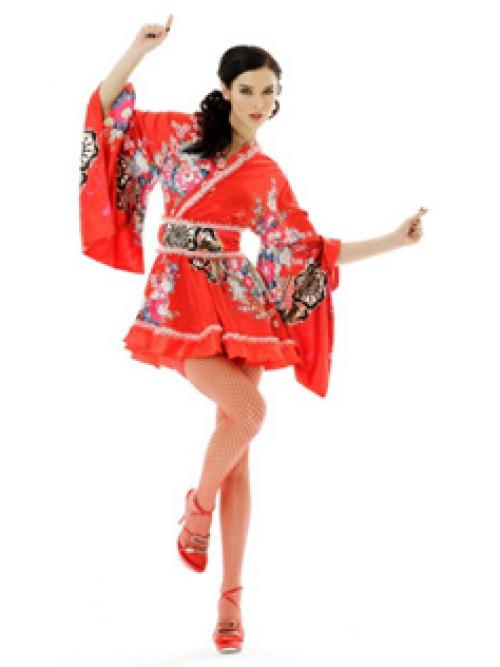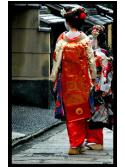Japanese Dresses
Japanese Dresses are of a wide variety of dresses, from Japanese costumes to dresses you can wear just about anywhere but are designed by Japanese designers.
Japanese costumes typically come from the Japanese gaming industry and are patterned after common Japanese video games, including Anise Tatlin's costume from Tales of the Abyss.
Traditionally, however, the term "Japanese dresses" refer to Kimonos, which are worn at special occasions in Japanese culture. They are not worn as a daily occurrence in today's Japan but at one time they were perfectly appropriate for daily wear.
There a number of types of kimono dresses used in Japan. There is the Tomesode dress that has regular sleeves and is done in colors or in black for married women. Furisode dresses have long sleeves and are appropriate for unmarried women for graduations, weddings, receptions and other ornate occasions.
The Homongi kimono Japanese dress is a semi-formal dress for both married and unmarried dress. They are appropriate for tea ceremonies or perhaps wedding receptions.
Tsukesage kimonos are even less formal than the Homongi kimono. There are also un-patterned kimonos, made from solid fabric, casual kimonos made from small-patterned fabrics and the Yukata kimono, that can be worn to bed as nightwear.
Brides wear Shiromuka kimonos or Uchikake kimonos, which are made from silk brocade.
Such Japanese dresses are often worn with wooden sandals called geta, cloth sandals called zori and socks known as tabi. Some kimonos come with kimono jackets known as haori and ornaments for the hair known as kanzashi.
Kimonos are wraparound dresses with the left side wrapped over the right side. The Japanese dresses are held closed with sashes known as obi.
Kimonos are difficult to put on and wear by yourself so it is not uncommon for professionals to dress a woman in her kimono properly.
Japanese dresses can be modern dresses designed by Japanese designers.
There are modern upbeat styles such as the Harajuka style of Japanese dress, commonly worn by Japanese teenagers. The styles of such dresses range from the Gothic Lolita, Visual Kei to the Kawaii style clothing and the Ganguro style. The dresses are brightly colored and cartoonish in nature, with cute striped socks as accents and many hair ornaments.
There are many amazing Japanese designers that make striking clothing that set the trend for Japanese wear for the lay person.
One of these designers is Mori Hanae, who has striking, unique fashion designs for mostly Japanese women. She has also designed Japanese clothing for public officials (uniforms), for film directors, actors and for Princess Masako. She is the epitome of haute couture in Japan and makes dresses that are both expensive and luxurious.
There are plenty of ready to wear Japanese clothing items that are inexpensive and can be worn for the Japanese woman at work or on the town at night. Japanese women tend to go with Japanese designers but such designs are also popular with international clients as well.

